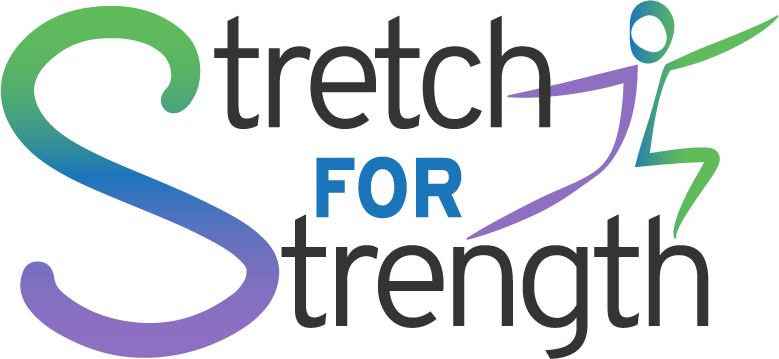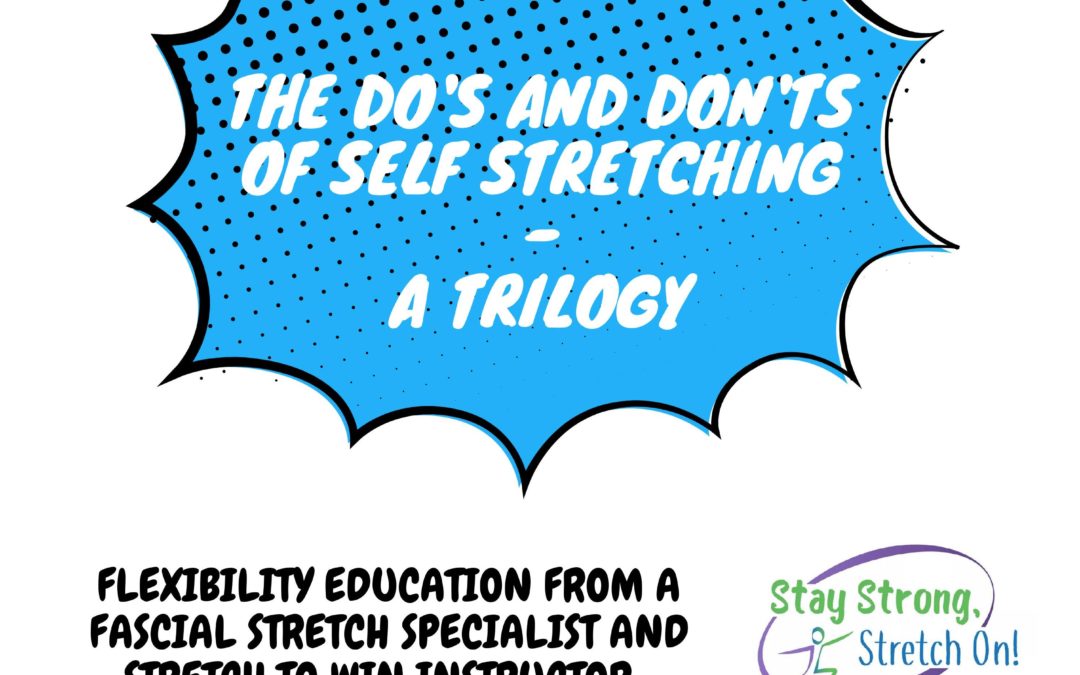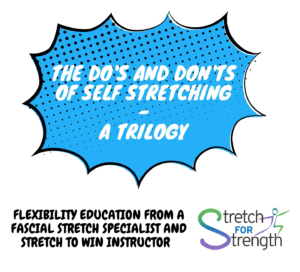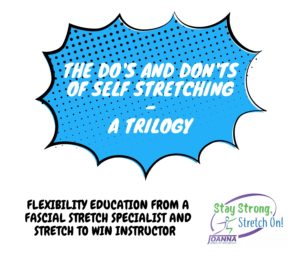The sequel, the one no one really likes better than the first. However, this post holds just as much importance! Our first installment focused on the basics and debunking some myths about stretching. We will continue with learning how to stay engaged in your stretching by individualizing it to your needs. The type of stretching I will be addressing in this series of posts is mindful, relaxing stretching to achieve gains in flexibility.
I have been exposed to the best and worst of stretching, and am continuing to present key factors to look for when you are implementing your own stretching protocol. Below is a reminder of the key points last post since they will be addressed:
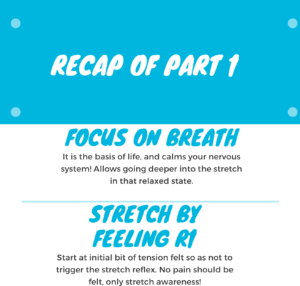
DON’T-Stay still and hold stretches
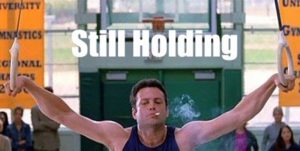
The classic method of stretching is called static, where you hold a position for a period of time anywhere from seconds to minutes. You have probably heard about it because it is what has been used in all of the research related to flexibility. Those studies are the ones that are black and white about if stretching is positive or negative, and they use it because it is easy to measure! If everyone in a study does the same stretch for the same amount of time, it is much easier to get results from. It is much more difficult to have people stretch based on feel, which yields drastically different results based on a number of factors (job, age, sleep, just to name a few). Given that fact, most articles whether they are from research or a magazine will likely be based on that.
Now when you were implementing this method yourself, I want you to consider how you felt doing those stretches. Was it painful? Were you bored? Did it feel like time was passing by slowly? That is because you are staying completely still. Imagine if you are cramped in line at Disneyland where you are stuck in one area without being able to move for 1 hour. Now imagine putting your name in at a restaurant at Disneyland for the same amount of time, but walking around to see other attractions while you wait. You may wait the same amount of time, but one wait time will pass by faster than the other. It is not fun to be static/not moving and the same goes for stretching. The idea behind static stretching is if you hold the stretch for a long period, it may bypass the stretch reflex of the muscle you are working with. I want you to be more concerned with increasing movement and monitor breathing to bypass the stretch reflex instead!
DO- Keep moving, even if it’s small
When stretching, while applying the key points from earlier, it is best to have some sort of perpetual movement. The movement created in a stretch can be done a variety of ways, with the first being breath. When there is a spot that feels tight you can keep the position for a breath, which provides a slight undulating movement and allows the tissue to unlock. Another way to keep motion going is by searching for that first resistance point (R1) continually. The R1 point will move until it completely stops, with the assistance of breath and wavering within the stretch to find it. The process can begin with large movement, and lessen to tiny oscillations to find that sweet spot. The final piece is finding different fibers. We are not two-dimensional creatures, so in each stretch there will always be a way to get the last edge of the fascial nets. Since we now know we cannot isolate a muscle, the possibilities are endless! Below is an illustration of variation:
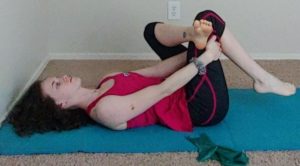
This classic glute stretch has countless variations to enhance it and pick up more fascial nets!
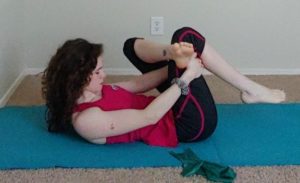
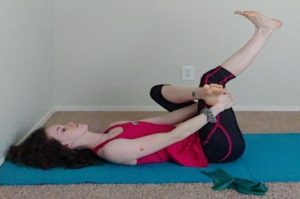
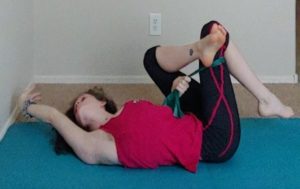
Each variation adds a unique twist, and replicates daily movement much more effectively!
Self-exploration is the key to finding what works best for you!
DON’T-Stretch each side the same
Have you ever completed the same stretch for the same amount of time on both the right and left sides, and felt o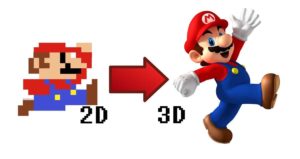 ff-kilter afterward? It is not uncommon to feel this way. To retierate, humans are not two-dimensional beings. If we treat our bodies like they are flat and evenly distributed, we are doing ourselves a disservice. Our daily activities can bring about an asymmetrical state. Knowing this, we do not want to increase the asymmetry we already have to a point of excess. In doing so, we are unintentionally undercutting the benefits of stretching and its ability to balance.
ff-kilter afterward? It is not uncommon to feel this way. To retierate, humans are not two-dimensional beings. If we treat our bodies like they are flat and evenly distributed, we are doing ourselves a disservice. Our daily activities can bring about an asymmetrical state. Knowing this, we do not want to increase the asymmetry we already have to a point of excess. In doing so, we are unintentionally undercutting the benefits of stretching and its ability to balance.
When believing you have to stretch each side equally, it becomes a fruitless routine. It should instead be a practice to make you better. Keep this idea in mind moving into the next section and article, where we will explore the mindset further.
DO- Feel differences between sides: both major and minor
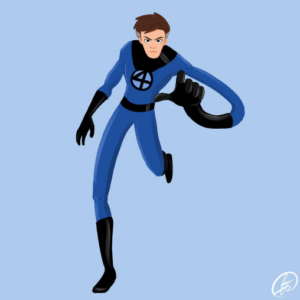
Distinguishing which stretches will work for you is dependent on feel. Every stretch has a variation for each individual and their needs. If you have an Olympic weightlifter and a baseball pitcher in the same room, the stretches each athlete needs would be drastically different. Each sport demands distinct results, with a variety of different variables. That principle is the same whether you are an athlete, a 9-5 desk worker, or do manual labor.
Our bodies like to stay stable and steady whenever possible, with this state called homeostasis. It can be thrown off by both positive and negative stimuli, but the goal is to equal out to a balanced state. In stretching terms, it is crucial for you to notice what needs more attention and what does not to achieve optimal results. Considering those differences, being from subtle to drastic, will help guide you to the point of balance. For example you may have a very tight right hip flexor, but the left one feels perfectly fine. The same goes for everything else you can stretch.
Framing imbalances positively is the best way to assure stretching success, as well as compliance. If you begin and notice something is tight, do not panic! Take solace in knowing you have the opportunity to improve yourself. You possess the freedom to embrace that you are human, and know there is always progress to be made!
Thank you so much for reading! Stay tuned for the final post in this self-stretching series, and remember to Stay Flexy, My Friends.
Bibliography
Frederick, A., Frederick, C. (2006) Stretch to Win. Champaign: Human Kinetics.
Frederick, A., Frederick, C. (2014) Fascial Stretch Therapy. 1st ed. Pencaitland, Scotland, UK: Handspring Publishing Ltd.
Jameison, S., Daily Durability
Image credit
https://medium.com/ets-india/what-can-be-better-choice-for-a-game-development-company-2d-games-or-3d-games-c3607742d517
https://i.pinimg.com/originals/91/e7/a9/91e7a9cd2ca13101cd544cf80f86fe5b.jpg
https://www.deviantart.com/xxiicoko/art/3-More-Days-Left-Mr-Fantastic-2015-551148271
